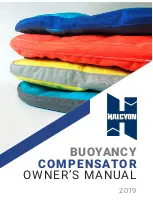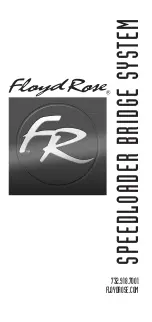
Biological Calibration Check
For Tympanometry and Reflex tests, the best way to determine that the
instrument is operating properly is to perform a daily check on a normal ear – the
operator’s ear if possible. This allows the operator to listen for the probe tone and
the stimulus tone (during reflex) and to determine if the air pressure system is
working properly. Keep a copy of the tests for a day-to-day reference in
checking the instrument.
Since individual thresholds can shift up or down as much as 5 dB from one day
to the next, variation within this range may be considered acceptable. Variations
that exceed this range, however, are likely to reveal problems that require
attention. The routine maintenance checks described in this chapter may suggest
the source and solution to the problem. If they do not, the instrument should
receive technical service by a GSI certified technician before further use.
Preventive Maintenance
Preventive maintenance includes periodically cleaning and inspecting the exterior
of the instrument. It is recommended that you develop a schedule for these
purposes. Unless otherwise noted, the frequency of instrument cleaning may be
determined by the user, depending on the conditions and frequency of use. It is
recommended that the instrument is cleaned at least annually.
Grason-Stadler, upon request, will provide circuit diagrams, component part lists,
descriptions, calibration instructions, or other information to assist qualified
service personnel to repair the instrument. The TympStar Pro Service manual
contains this information.
Cleaning the System
Turn the system
OFF
and disconnect power before cleaning the instrument. Use
a soft cloth lightly dampened with cleaning solution to clean all exposed
surfaces. Take care to not allow liquid to come in contact with the metal parts
inside the transducers (e.g., earphones / headphone). Do not permit solutions or
disinfecting agents to seep into the electronic portions of the system. Take
special care around controls, connectors and panel edges. Remove any dust from
the exterior of the system with a soft brush or cloth. Use a brush to dislodge any
dirt on or around the connectors and panel edges. Remove stubborn dirt with a
soft cloth slightly dampened with mild detergent and water. Wipe surfaces dry
afterward. Do not use instrument or transducers until they are completely dry.
LCD Touch Screen
Your first step in cleaning a screen should always be to remove as much from the
screen as possible without actually touching it. A simple rubber dusting bulb can
be used to dislodge most electrostatically-adhered dust particles. Use the
supplied microfiber cleaning cloth to wipe the finger prints from the LCD screen.
Содержание TYMPSTAR PRO
Страница 2: ...D 0105594 Rev G i...
Страница 7: ......
Страница 27: ...GSI Part number Return to authorized representative special disposal required Manufacturer...
Страница 98: ......
















































